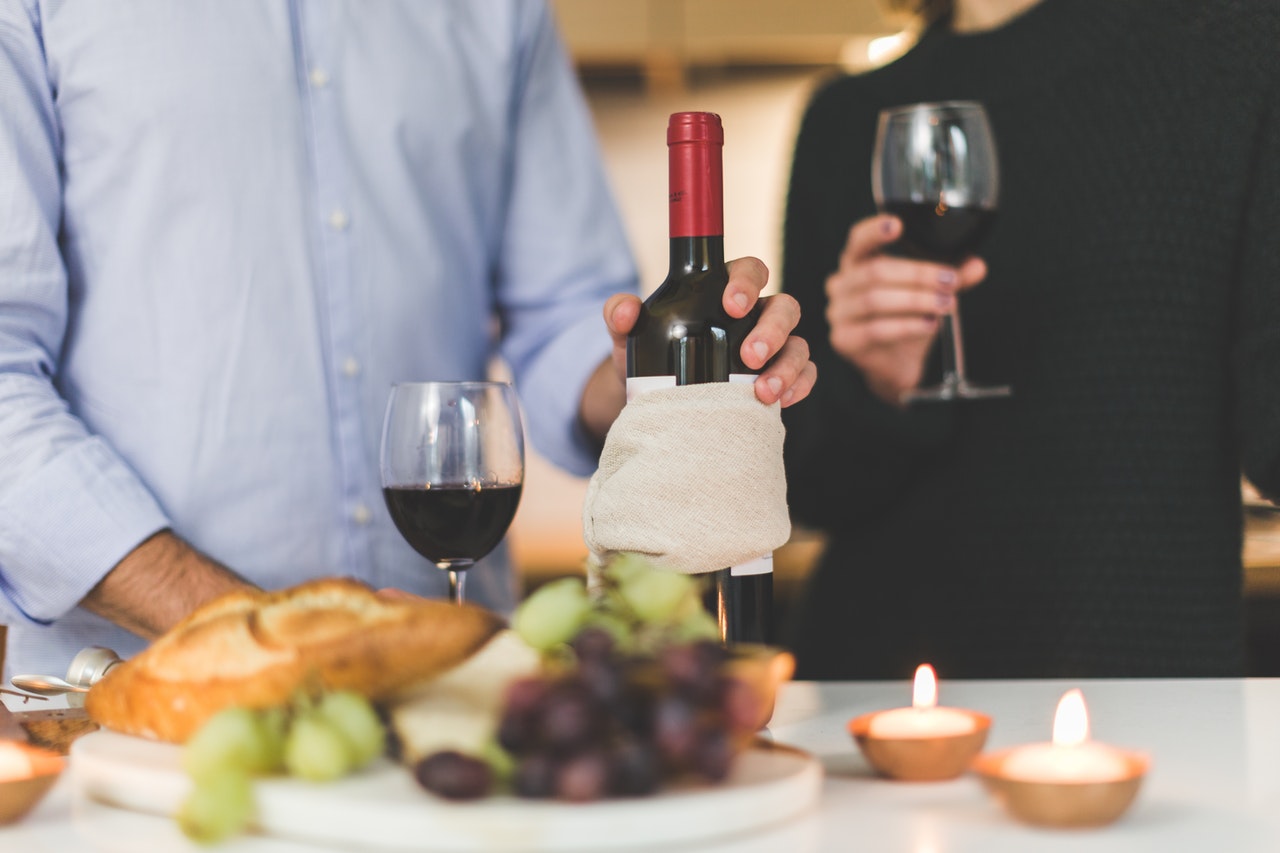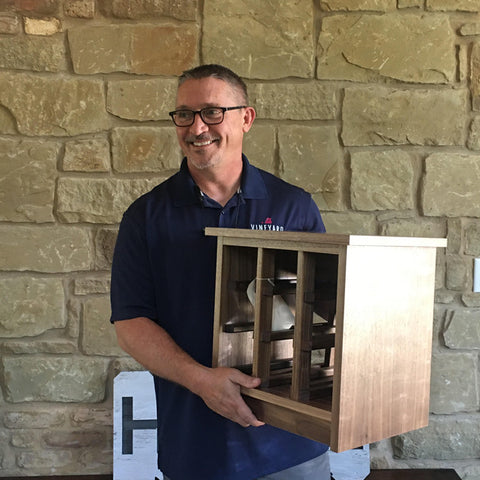Wine is always better with friends. Hosting your own wine tasting party is a wonderful way to experience new wines and have a fun and engaging evening.
But are you overwhelmed by the idea of hosting your own wine tasting party?
Never fear. In this post, we share dead-simple tips for hosting a successful wine party. Let’s get started.
Create a Guest List
The first step to a great party is to a great guest list. Wine tasting parties should always be “by invite only” because you want to ensure that you have enough wine to go around. Plus, you also want to create the best social atmosphere for wine tasting. Invite personalities that will play off of each other. Limit your guest list to around 12.
And invite a mix of people—some who are knowledgeable in wine, and some who are complete newbies.
Remember not to invite only self-proclaimed wine lovers. Some people who say that they don’t like wine may not have actually given wine a choice. And if you’re offering a diverse selection of wines, your tasting could be an eye-opening experience for them and serve as their first dalliance into a love affair with wine.
When inviting guests, be sure to send out invites a few weeks’ in advance. Also ask for RSVPs so that you can plan accordingly. On the invitation, be sure to inform your guests of a dress code. People always like to be prepared so whether it’s casual or cocktail, let them know ahead of time. Also let your guests know not to wear perfume or cologne because it interferes with the tasting experience.
Invest in Quality Wine Glasses
Not all wine glasses are created equal. Your wine glass itself can improve the tasting experience. Some glasses are better for reds, and others are better for whites.
If you’re serving reds, it’s best to opt for a glass with a medium-sized bowl. The width of the bowl will affect how much wine is exposed to the air. Reds should have more surface space so that the flavors can emerge and the aroma can easily travel to the nose.
If you’re serving whites, it’s best to go with a narrower glass. Narrow glasses preserve the chill (white wines should be served and enjoyed at a cooler temperature). The narrowness of the glass also helps to direct the wine’s more delicate aroma to the nose.
Sparkling wines can also benefit from a narrow glass because this shape reduces oxygen exposure which affects carbonation.
Stems are also important. The stem on a glass reduces temperature transfer from the hand. If you like the look of stemless, it’s better to go with reds, which can be served at higher temperatures.
If you’re comparing two wines, it’s important to allocate two glasses for each guest. This makes comparison much easier.
If you don’t want to buy all of these wine glasses (especially for a one-time event), many wine retailers rent them. Call your local wine retailer to find out.
Don’t forget wine charms! Give each guest a charm for their glass so that there’s no mix ups. Or you can use a dry erase pen to write names on each glass.
Source the Wine
Now it’s time to supply wine for your tasting party. But from where?
If you have your own cellar, you can shop from there.
Or, you can buy all new wines for your party. You can usually get a discount from both local or online retailers, or even smaller wineries, if you buy multiple bottles at the same time, such as half a dozen.
If you don’t want to buy all of the wines yourself, you can ask your guests to bring their own bottle to share. (If you’re doing a blind tasting, ask the guest to bag or wrap the wine in foil.)
Offer Tasting Scorecards
Here’s one thing you can do to elevate your wine tasting party: Hand out tasting scorecards. This helps you turn your tasting into a fun game for your guests. Sure, they can discuss the wine, but it’s so much easier for them to compare notes at the end of the evening if they fill out scorecards as they go.
You can either buy pre-made score cards from an online marketplace like Etsy or you can create your own. If you decide to create your own card, be sure to include the following scoring criteria:
- Taste
- Aroma
- Body
- Appearance
- Type (White, red, rosé, sparkling)
Also provide a space to indicate whether or not they’d purchase the wine.
When handling out the scorecards, supply pens, too!
Greet Your Guests With Wine
It’s finally time to host your wine party. Fortunately, wine parties are among the easiest parties to host because you’re serving wine. Wine loosens people up and helps them feel more relaxed, instead of nervous and shy. So, be sure to greet your guests with a glass of wine as soon as they walk into the door. This sets the mood right away.
Sparkling wine tends to be the best option for greeting your guests, especially if they’re arriving at different times. Sparkling is refreshing and not heavy.
Create Conversation Starters
While your wine will take the center stage and do most of the entertaining, it’s also a good idea to create conversation starters so that your guests don’t experience awkwardness in the beginning of your party. Awkwardness can be a buzz-kill.
Prepare wine trivia to share with your guests. Also purchase or search the Internet for conversation cards that you can print out and share with your guests. Another option is to put out board games, like Jenga, and encourage your guests to participate.
Decide What to Serve

Which wines should you serve at your party?
If you’ve already picked out a theme, you can narrow it down even further, and go by grape or by year.
You can choose the same year (vintage) and compare wines from different producers. Or you could choose wines from the same grape but from different producers. Both of these are considered horizontal tastings.
Another option is to go with vertical tastings where you stick with one producer and taste wines from different years.
Alternatively, you can choose a theme for your tasting. For example:
- Go seasonal - In the winter, choose full-bodied reds for your tasting party. In the summer, opt for lighter wines, like whites and rosés.
- Choose a region - Highlight wines from a specific region, like Italy or South America.
- Go with grape varieties - Serve only chardonnays or syrahs.
- Choose your favorite type of wine - Deep dive into your favorite wine. For example, choose rosés from around the world.
- Base it on price - Keep your party budget-friendly and only serve wines under a certain price point. Or pit expensive against affordable and do a blind taste test to compare.
If you want to remove any potential bias from a tasting, you can cover bottles in wine bags (or wrap them in foil) and then attach a card or sticker with a number to each bottle. This way, your guests will rely only on the taste and not on any other factor.
Calculate How Much Wine to Serve
How much wine should you serve at your tasting party?
Let’s start with the variety. Opt for between four to six wines.
Now, let’s move on to the amount of wine you should serve during your tasting. Remember that it’s a tasting and not a filling. The standard tasting serving is 2 oz per glass.
So how many bottles should you have for your guests? Let’s do a little bit of math:
A standard bottle has 25 fluid oz. If you have 12 guests, you can budget 1 bottle of each. However, it’s better to buy two of each to be on the safe side.
Choose Your Food Pairing
What food pairs well with wine?
There are a lot of opinions on this. It’s generally best to choose classic pairings that everyone expects, including:
- Cheese
- Bread
- Fruit
- Chocolate
- Cured meats, such as smoked salmon
While you’re not obligated to serve a full spread during your tasting, it’s in good taste to at least serve light appetizers. Also remember to offer bread and water between tastings to cleanse the palate. Water also protects against dehydration.
If you do decide to serve an entree, remember that wine should taste sweeter than the entree (otherwise, it will read as “bitter”). Also, wine should have the same flavor intensity as the food (otherwise, the food will overpower the wine). As a general rule of thumb, reds go with red meat or fat. Whites go with white meat.
Also, if you’re serving wines from a specific region, serve foods from that region.
Decide on the Order of Serving
Now that you know what you’re serving and how much, it’s time to figure out the proper serving order.
You make your own rules, but the standard progression is:
- Young to mature
- Dry to sweet (for only white wines)
- Light to full-bodied (for only red wines)
- White to red
- Light to heavy
- Sparkling to white to rosé to red to dessert
Also remember to decant any bold reds ahead of time. They need to breathe before being served.
Chill wines to serve at the proper temperature.
- Sparkling wine should be served between 40 to 45° F.
- Roses and blushes should be between 48 to 55° F.
- Whites should be served between 45 to 60° F.
- Reds should be served chilled between 55 to 65° F.
Give Your Guests Instructions on How to Taste the Wine

Give your guests a primer on how to score the wine. This can be done when handling out scorecards. Never assume that your guests know the proper way to taste, especially if you have newbies in the mix.
Here are a few pointers to share:
- See and swirl - Swirling releasing the aroma. Hold the glass up to the light to see its opacity and color. Does the wine look clear or hazy? If it’s white, is it yellow or golden? If it’s red, is it purple or brown?
- Sniff - What does the wine smell like? Is it fruity, woody, earthy? Is the fragrance intense or subtle?
- Sip - Remind them to hold the wine to taste the flavor. What does it taste like? Is it fruity, woody, earthy? Is it sweet or dry? Acidic or not? Full-bodied or light? Is the finish short or long?
Offer a Dump Bucket
While you may or may not want to provide spittoons for your guests, it’s a good idea to offer a dump bucket for them to get rid of left-over wine before moving to the next. This convenience prevents people from venturing into your kitchen to dump left-over wine.
Final Thoughts
Hosting your own wine party should be fun. Use the above tips to create a memorable wine party that’s a hit with your friends.


